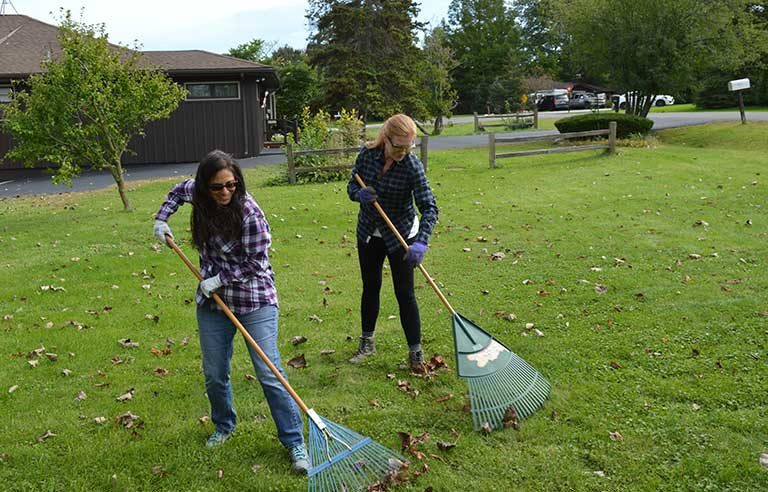Yardwork done safely

With the fall season comes the changing colors of leaves – and yardwork. The American Chiropractic Association says homeowners need to take care to prevent back injuries, neck strain and shoulder pain while cleaning up the yard. “Just as playing football or golf can injure your body, the twisting, turning, bending, and reaching of mowing and raking can also cause injury if your body is unprepared.”
The ACA recommends wearing supportive shoes with good arch support, standing as straight as possible when raking or mowing, and staying well hydrated.
When raking, use what the ACA calls a “scissors” stance: Keep your right foot forward and left foot back for a few minutes, then switch the positioning of your feet. When bending over, always bend at the knees – not the waist.
Lawn equipment
If used incorrectly, lawn equipment such as leaf blowers and hedge clippers can lead to back and neck pain, and even muscle tears. The ACA offers the following tips:
- If the equipment comes with a strap, use it. Place it over your head and on the shoulder opposite the side of your body from the device to help normalize your center of gravity.
- Buy ergonomically designed tools when possible.
- Use your entire body weight to push lawn mowers, not just your arms and back.
- Take frequent breaks to avoid muscle fatigue.
- Wear hearing protection if your equipment is loud.
Leaves: To burn or not to burn?
If burning leaves is part of your yardwork plan, keep in mind that the Environmental Protection Agency doesn’t recommend it. “The open burning of leaves produces particulate matter and hydrocarbons, which contain a number of toxic, irritant and carcinogenic (cancer-causing) compounds,” the EPA says. Plus, leaf burning is illegal in many places. Check your local ordinances.
As an alternative to burning yard waste, the EPA recommends composting, a process involving placing yard waste and other organic material (such as food scraps) into a bin. Microorganisms break down the waste into compost, which can be used to enrich soil or as a fertilizer. Learn more at epa.gov/recycle/composting-home.
Post a comment to this article
Safety+Health welcomes comments that promote respectful dialogue. Please stay on topic. Comments that contain personal attacks, profanity or abusive language – or those aggressively promoting products or services – will be removed. We reserve the right to determine which comments violate our comment policy. (Anonymous comments are welcome; merely skip the “name” field in the comment box. An email address is required but will not be included with your comment.)
